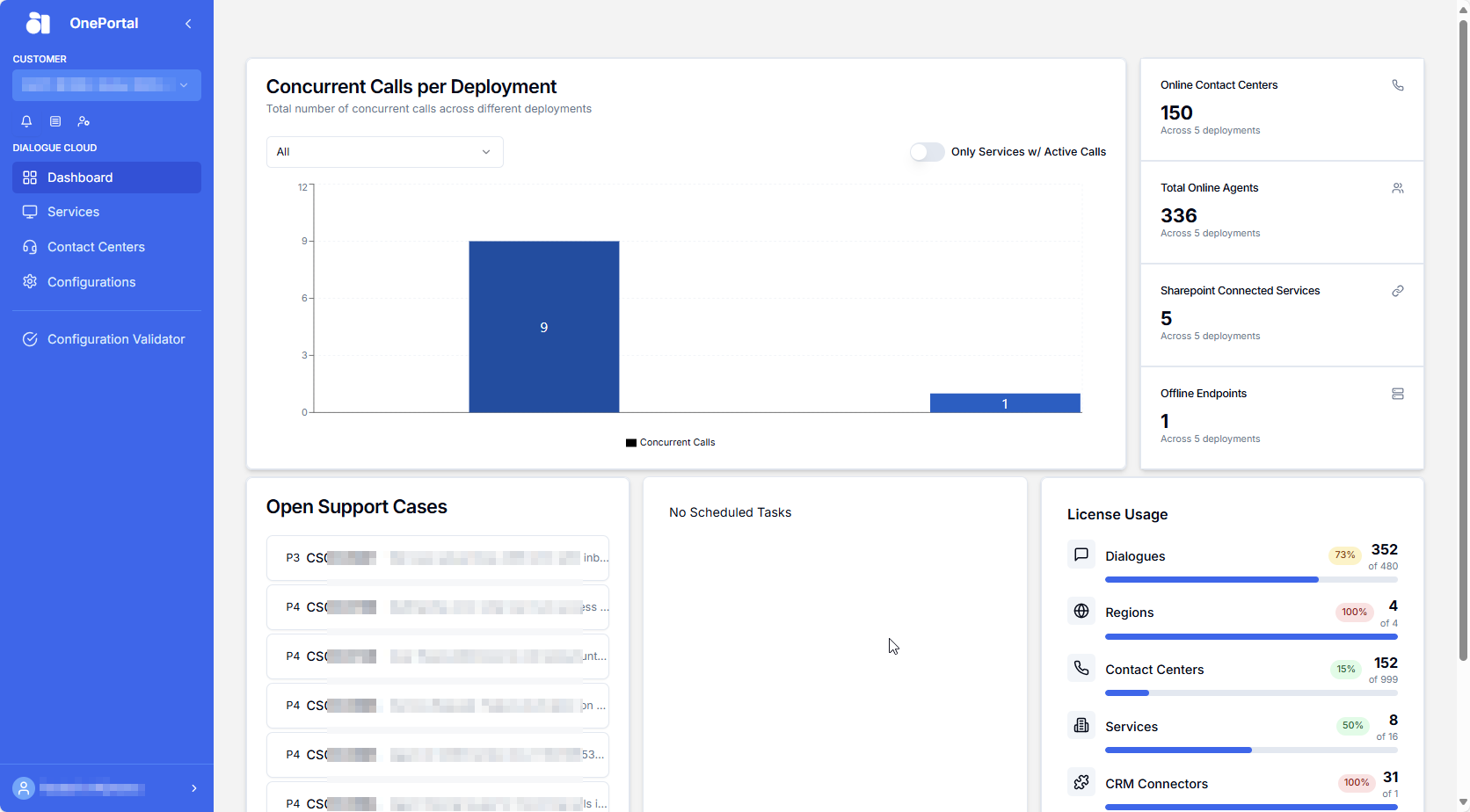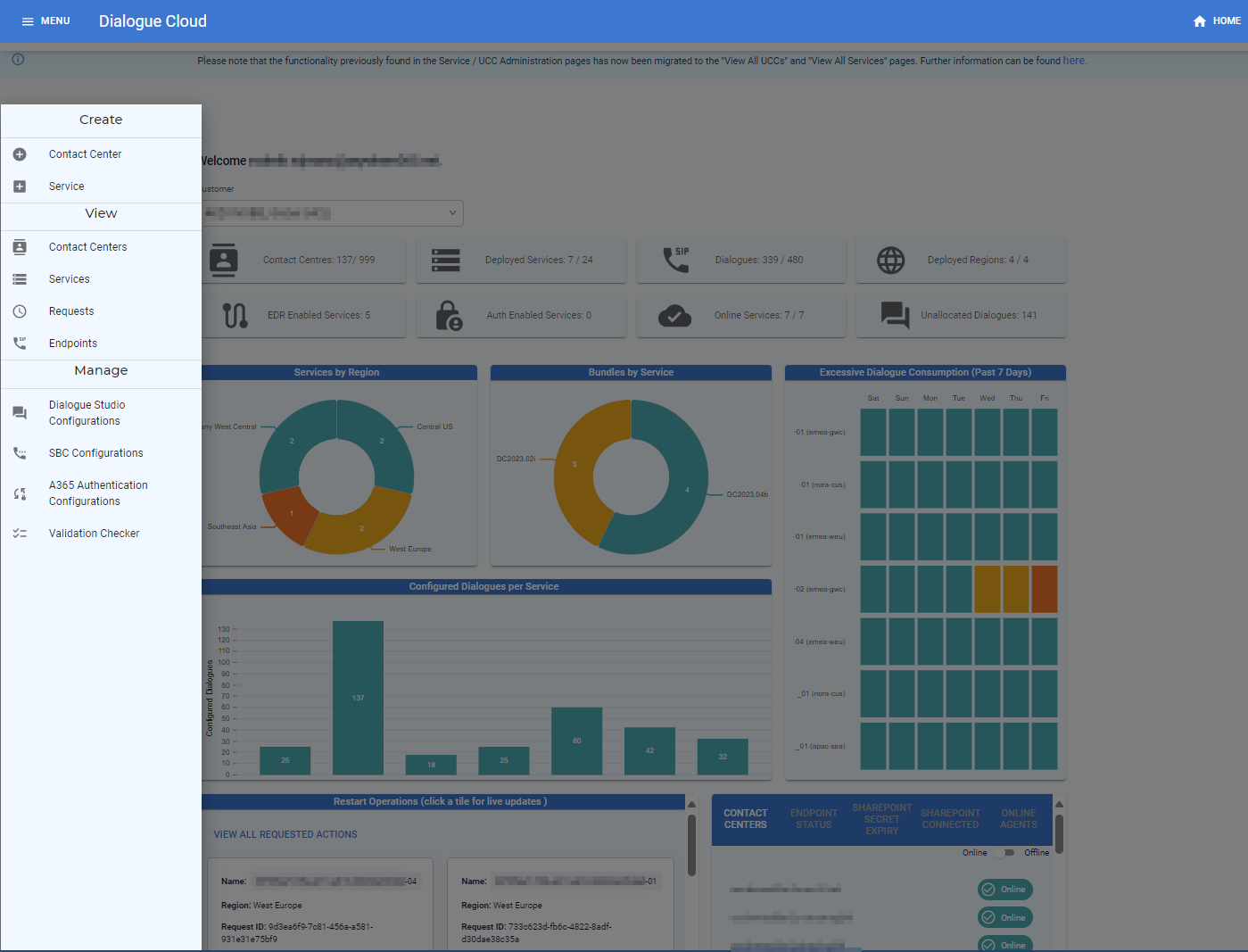Introduction & Architecture
Introduction
Announcement
Anywhere365 Partner Portal has been rebranded and rebuilt as AnywhereNow OnePortal Formerly known as Partner Portal. A redesigned web portal for managing Dialogue Cloud deployments. and has gone live on 17-04-2025. Updated documentation and screenshots will be added over the coming weeks. All menu's and options of Partner Portal can still be found in OnePortal albeit in a slightly different place or look and feel.
With the OnePortal, AnywhereNow provides its partners with the tools to be able to perform a set of actions to manage your customers Services, UCC A Unified Contact Center, or UCC, is a queue of interactions (voice, email, IM, etc.) that are handled by Agents. Each UCC has its own settings, IVR menus and Agents. Agents can belong to one or several UCCs and can have multiple skills (competencies). A UCC can be visualized as a contact center “micro service”. Customers can utilize one UCC (e.g. a global helpdesk), a few UCC’s (e.g. for each department or regional office) or hundreds of UCC’s (e.g. for each bed at a hospital). They are interconnected and can all be managed from one central location.’s and SBC's in the Dialogue Cloud.
This manual will provide a step-by-step explanation of how to use this tool.
Note
Please beware that all displayed data is near-realtime. When selecting a specific customer or accessing information such as Endpoints Status, SharePoint Secret Expiry, SharePoint Connectivity or Online Agent Count, the system will query data directly from the source, ensuring accuracy and timeliness.
Architecture of a customer environment
Any customer's AnywhereNow architecture is built up with two main elements similarly named in the OnePortal menu's:
-
The Service (to host one or more UCC's)
-
The Contact Center(s) (Unified Contact Centers or UCC's in short).
Furthermore,
-
Every customer needs at least One UCC Service and One UCC. When the first Service gets created, the first UCC needs to be/is simultaneously created.
-
All UCC's on the same UCC Service will share common webservices unique to that customer for inter-communication with various (client) applications.
-
A customer can or may need multiple services to spread UCC's across different services to limit interdependency or balance load under high traffic. The customer contract states how many services a customer is entitled to.
-
A service is always limited to one of our global regions. If UCC's are required in two or more global regions at least one service (and UCC) is required to be purchased and set up in each region to provide UCC features to that global region.

